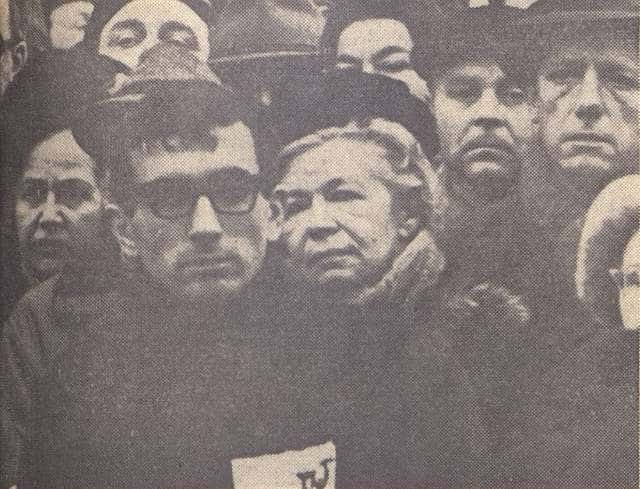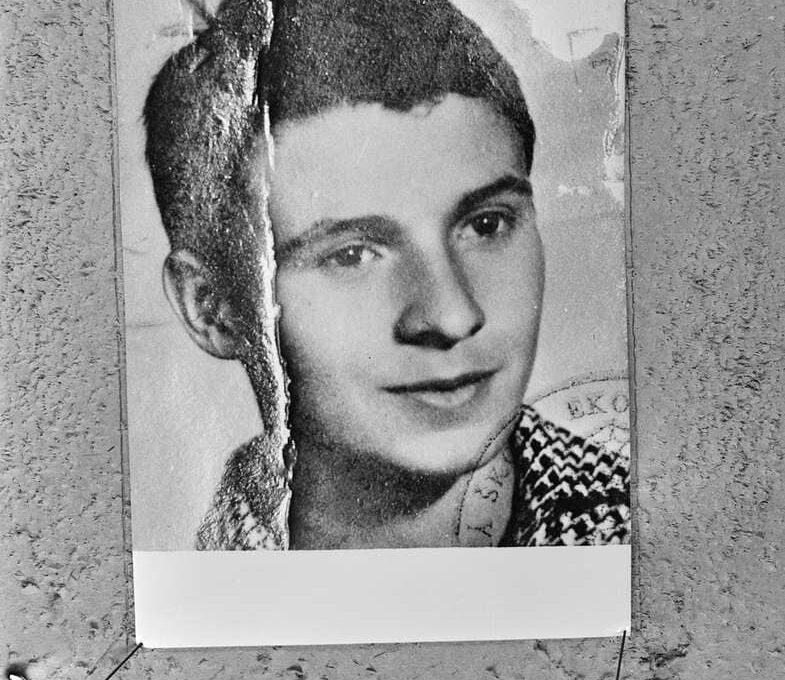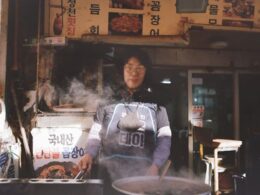Obsah Zobrazit
The name Jan Palach stood out as a symbol of courage and resistance during the difficult times of the Czechoslovakia revolt against the Soviet occupation in the 1960s. In the end, communism in Czechoslovakia fell because of Jan Palach’s selfless deed, which sent shockwaves across the country.
This young student gave his life for his country at the tender age of twenty. He protested the repressive Soviet dictatorship on January 16, 1969, by setting himself on fire in Prague’s Wenceslas Square. Palach remained resolute in his fight for democracy and freedom even as he endured unbearable anguish.
The Czech people were inspired to rebel against the authoritarian rule when he stunned the nation by self-immolating. As a result of the protests and demonstrations sparked by Palach’s sacrifice, the cause of freedom and democracy gained enormous support.
Even after he passed away, Czech martyr Jan’s bravery continued. His example encourages everyone to fight for justice no matter how difficult the situation becomes. All those who battle for freedom and justice carry his legacy of bravery and selflessness with them.
Who was Jan Palach: The story of the Czech martyr

Jan Palach was a Czech scholar who became the face of resistance to the Soviet occupation of Czechoslovakia in 1968. Palach, who was born in Prague on August 11, 1948, grew up during a difficult period highlighted by the communist regime’s control over Czechoslovakia. He studied history and political economics at Charles University in Prague, where he grew increasingly disillusioned with the authoritarian system.
A major turning point in Palach’s life occurred in August 1968, when Warsaw Pact soldiers invaded Czechoslovakia to put down the Prague Spring reforms. The invasion dashed dreams for democracy and enforced harsh communist rule over the country. Palach was very upset by the loss of liberty and the harsh suppression of opposition, and he felt forced to act.
On January 16, 1969, Czech martyr Jan carried out a demonstration that reverberated throughout Czechoslovakia and beyond. He lit himself on fire in Prague’s Wenceslas Square as a symbolic act of opposition to the communist dictatorship and Soviet occupation. Despite serious burns, Palach lived for three days before succumbing to his injuries on January 19, 1969.
Palach’s self-immolation stunned the country and generated significant indignation, both domestically and internationally. On January 25, 1969, his funeral became a large anti-government march, with thousands of mourners honoring his heroism and sacrifice. Palach’s act of defiance sparked a new wave of resistance against the communist system, galvanizing opposition to Soviet brutality.
In the years that ensued, Jan Palach became a symbol of resistance and a martyr for liberty and democracy. His legacy is still celebrated in Czech society, with streets, squares, and memorials named after him. Jan Palach’s narrative is a sobering reminder of the human cost of totalitarianism, as well as the ongoing struggle for freedom and justice.
Understanding the Burning Legacy of Jan Palach and His Act of Protest
Jan Palach’s burning himself in 1969 echoed not just throughout Czechoslovakia, but also around the world, creating a flaming legacy that continues to be honored and commemorated today. Palach’s choice to set himself on fire in Wenceslas Square was more than a desperate act of rebellion; it was a purposeful and calculated gesture designed to stir up the nation’s conscience and instill a spirit of resistance against the tyrannical communist dictatorship and Soviet occupation.
Palach’s deed, motivated by a deep sense of despair and rage in the aftermath of the 1968 Warsaw Pact invasion, was both an individual sacrifice and a collective call to action. By selecting such a dramatic and violent method of protest, Palach hoped to shock society out of its lethargy and indifference, forcing people to confront the harsh reality of Soviet dominance and the decline of freedom and democracy.
Palach’s self-immolation was not an impulsive act, but rather a methodically planned act of rebellion. In the days preceding his protest, he wrote multiple letters and declarations explaining his motivations and urging solidarity in the fight against totalitarianism. His willingness to give his life for the cause of freedom demonstrated his unshakeable dedication to the ideals of democracy and human rights.
Palach’s protest had a deep and immediate impact. His act of self-sacrifice sparked a fresh wave of opposition to the communist system, prompting countless more to speak out against injustice and oppression. His burial, which became a major anti-government demonstration, was an important turning point in Czechoslovakia’s history, signaling a renewed desire to reject Soviet dominance and struggle for democratic reform.
Jan Palach’s Funeral Marks a Nation’s Mourning
Jan Palach’s burial in January 1969 symbolized Czechoslovakia’s collective sorrow and rejection of the communist regime and Soviet occupation. Palach’s burial was a powerful expression of popular displeasure and support after his self-immolation in Wenceslas Square days earlier shocked the nation and provoked protests.
Na stránkách Jan Palach funeral in Prague became a large anti-government protest with thousands of mourners. Despite the state’s attempts to restrict the gathering, individuals from all backgrounds joined together to honor Palach and protest the regime.
Palach’s funeral procession through Prague was sad, with mourners carrying banners, flowers, and candles. Challenging the dictatorship and demanding freedom and democracy, many disregarded the government’s ban on public gatherings.
Students and activists carried Palach’s flag-draped coffin, signifying Czechoslovak solidarity in times of trouble. Palach was buried at Olsany Cemetery after a large assembly of grief and defiance.
The government’s harsh response to Palach’s funeral fueled dissent and strengthened Czechoslovak determination. The mourners refused to be silenced or intimidated by riot police and security troops.
The regime experienced international condemnation and domestic turmoil after Palach’s funeral, prompting calls for political reform and an end to Soviet rule. Palach’s death was tragic, but his burial inspired a new generation of activists to fight tyranny and persecution.
How the Sacrifice of Jan Palach Shook the World and Created a Ripple Effect
Jan Palach’s 1969 self-immolation to protest Czechoslovakia’s communist rule had repercussions worldwide and domestically. The effects of Jan Palach’s death byly:
Global Attention
Sebeupálení Jana Palacha, který se postavil proti sovětské invazi do Československa, vyvolalo mezinárodní mediální ohlas a politické diskuse ve východní Evropě.
Resistance
Palachova oběť inspirovala hnutí solidarity a protesty po celém světě. Jeho odvážné gesto inspirovalo bojovníky za svobodu a lidská práva i v jiných zemích, které se potýkají se srovnatelnými překážkami.
Impact on Czech Society
Palachovo sebeupálení přivedlo Čechy rozrušené sovětskou okupací k soucitu. Jeho hrdinství inspirovalo Čechy k požadavku politické svobody a k boji proti autoritářství.
Government Crackdown
Československá vláda po Palachově smrti zatýkala a věznila aktivisty a zvýšila cenzuru a monitoring. Odpor, který Palachova oběť vyvolala, byl neuhasitelný.
Change Catalyst
Palachova statečnost inspirovala bojovníky za svobodu a demokracii k odporu a vytrvalosti. Jeho smrt podnítila odpor proti sovětské vládě a vedla k Pražskému jaru 1968.
Courage legacy
Odkaz Jana Palacha ukazuje sílu individuální odvahy a oběti proti nespravedlnosti. Jeho neochvějná oddanost svým zásadám inspiruje generace aktivistů a účastníků kampaní po celém světě, aby se i v zoufalství postavili za to, co je správné.
Commemoration and Remembrance
V České republice i mimo ni jsou památníky, pomníky a kulturní akce, jako např. muzeum komunismu v Praze oslavit Jana Palacha a jeho vyprávění pro budoucí generace. Jeho odkaz bojovníka za svobodu a demokracii je povzbuzením pro ty, kteří bojují za lepší svět.
Influence on Art and Culture
Palachova oběť inspirovala mnoho literárních, výtvarných a filmových děl, která umocnila jeho poselství a rozšířila jeho příběh. Jeho tvůrčí díla nadále povzbuzují ostatní k boji proti útlaku a tyranii.
Reflection on History
Smrt Jana Palacha vyvolává otázky o historii Československa a boji východní Evropy za demokracii. Jeho statečné jednání nám připomíná oběti, které přinesl za svobodu a spravedlnost, a varuje před autoritářstvím a tyranií.
Jan Palach Memorial as a Symbol of Defiance and Remembrance
Po Palachově předčasné smrti byl postaven bronzový kříž na žulové desce jako jednoduchý, ale působivý památník. Památník, který nese Palachovo jméno a datum sebeupálení, zve návštěvníky k uctění památky statečného mladého muže, který zemřel za spravedlnost.
Na stránkách Memoriál Jana Palacha uctívá Palachův vzdor a inspiruje zastánce lidských práv a politické svobody. Památník se postupem času stal symbolem českého odporu proti útlaku a houževnatosti českého národa.
Na stránkách Jan Palach Památník také informuje budoucí generace o Palachových obětech za svobodu a demokracii. Památník pomáhá budoucím generacím připomínat si Palacha prostřednictvím komentovaných prohlídek, vzdělávacích programů a vzpomínkových aktivit.
Na stránkách Memoriál Jana Palacha uctívá statečného mladého muže, který bojoval proti tyranii a nespravedlnosti, a nabízí naději a vzpomínku. Návštěvníci z celého světa se na tomto místě pokloní jeho památce a připomenou si sílu lidských činů, které mohou inspirovat ke změně, a význam toho, že je třeba se postavit za správnou věc, a to i proti zdánlivě nepřekonatelné přesile.
The Impactful Film That Reveals the Story of Jan Palach’s Life
"Hořící keř" je silný film o tom. Jan Palach, mladého českého studenta, jehož sebeupálení v roce 1969 symbolizovalo odpor proti diktatuře. Film režisérky Agnieszky Holland sleduje Palacha od vysokoškolského studenta až po národního mučedníka a osvětluje nestálé politické klima v Československu pod sovětskou vládou.
Děj filmu se odehrává v období Pražského jara, kdy Sovětský svaz a jeho spojenci brutálně potlačovali demokratické reformy. Po Pražském jaru byla česká společnost plná strachu a útlaku, protože obyvatelé se snažili žít pod utlačovatelskou diktaturou. "Film Hořící keř tuto atmosféru působivě vykresluje prostřednictvím dramatického příběhu a strhujících hereckých výkonů.
Film Jana Palacha se soustředí na Jana Palacha, kterého s hloubkou a jemností ztvárnil Viktor Zavadil. Palach divákům ukazuje vnitřní utrpení mladého kluka, kterého nespravedlnost dohání k zoufalým činům. Palach uvažuje o tom, že se na protest proti sovětskému převratu upálí, a film zkoumá jeho charakter a psychologické a emocionální dopady jeho činů na něj samotného i na ostatní.
Po Palachově smrti byla česká společnost pobouřena a rozhořčena, jak ukazuje "Hořící keř". Film ukazuje seismický dopad Palachova sebeupálení na národní povědomí, od rozsáhlých pražských protestů až po vládní represe.
"Hořící keř" je oceněním Jan Palach a mnoha dalších, kteří zemřeli za svobodu a demokracii, s dramatickým příběhem a skvělou režií. Palachova síla a odhodlání divákům připomínají, že jednotlivci mohou změnit svět a dát naději i v těch nejtemnějších podmínkách.





